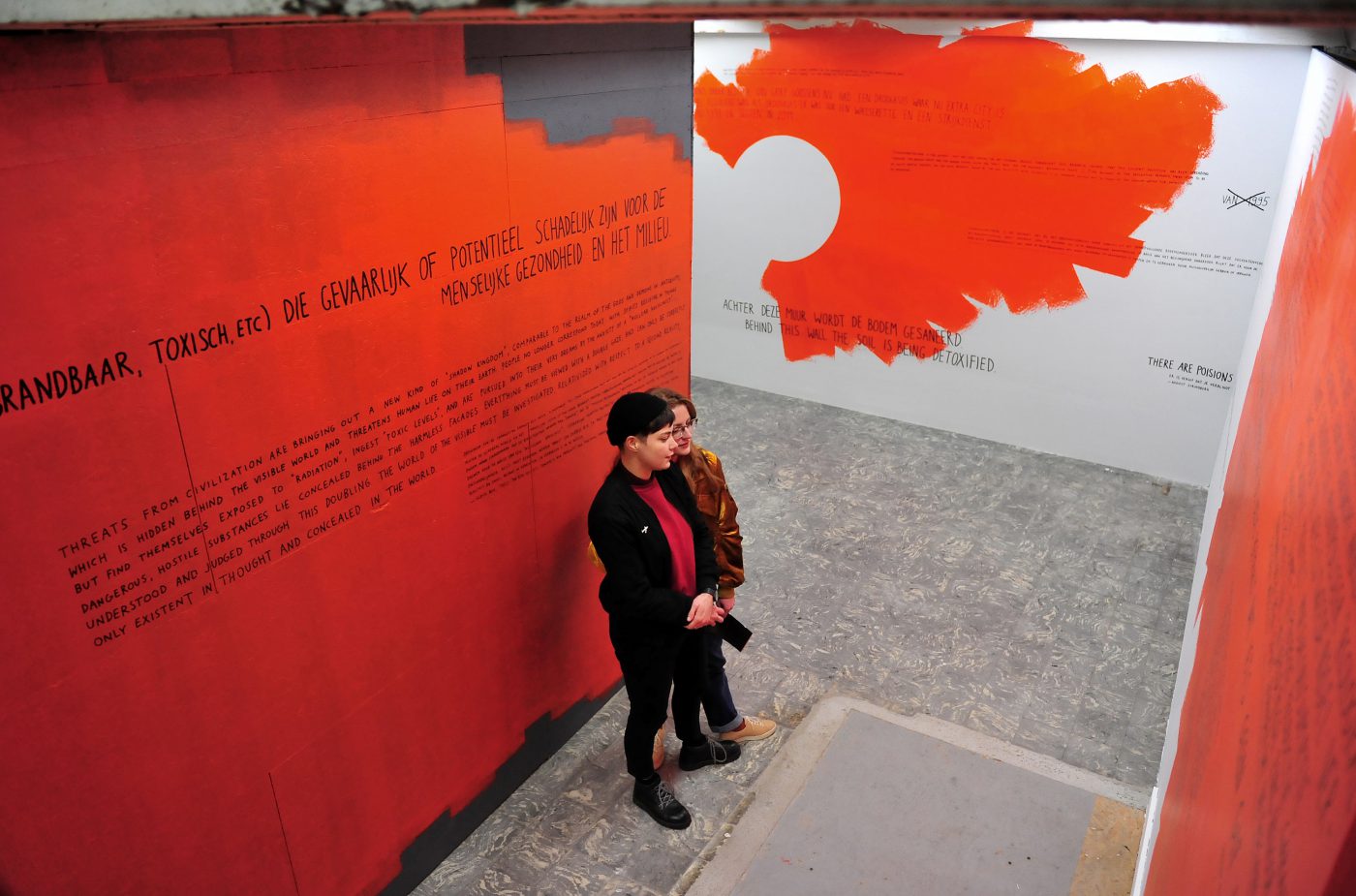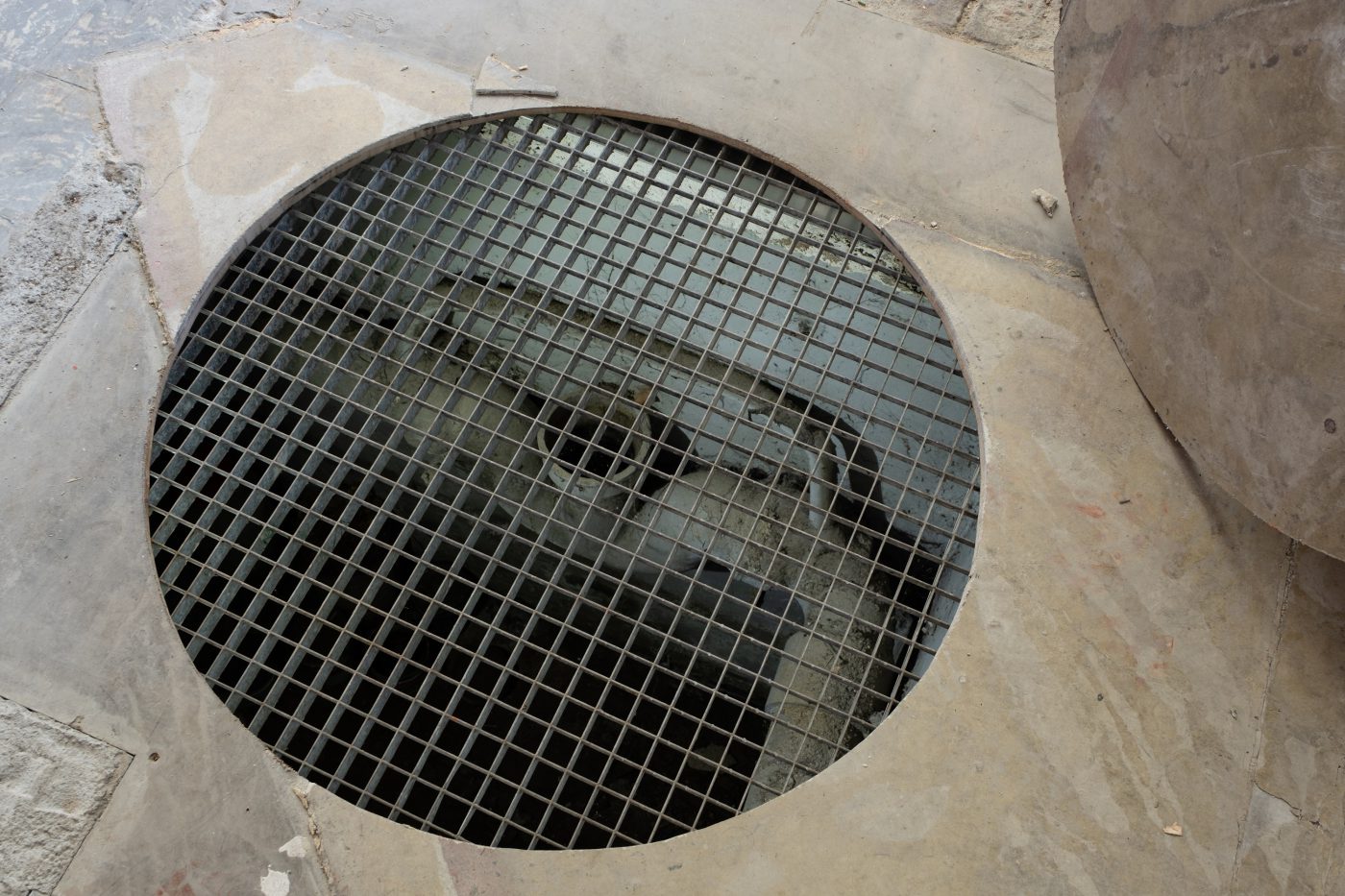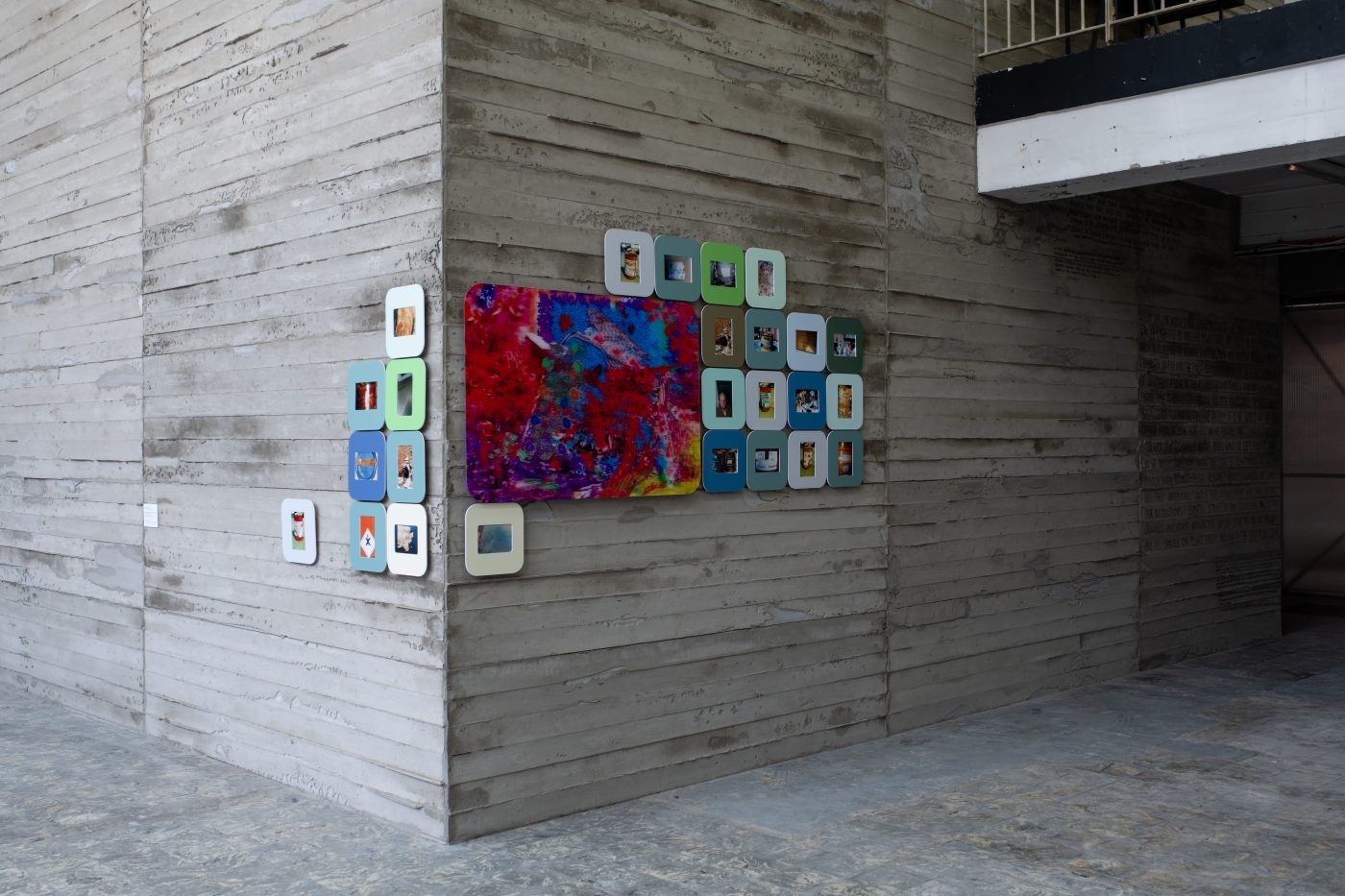Encountering the Toxic – Deadly Affairs at Extra City Kunsthal
Deadly Affairs astutely reminds us that the toxic has become something ordinary. If this is so, how can we respond not only to its elusive invisibility but to its banalisation?
Breathe in. Along with air, each lungful you inhale contains the detritus from our indoor environments: fibers, vapors, tiny airborne insects and their excrements, viruses, bacteria, and fungi. Breathe out. Breathe in. Do you realize that chemical fumes from the objects around you escape into the air, are drawn into your lungs, dissolve across your alveoli membranes and into your blood? Breathe out.[1]
Toxicity has no place; it is everywhere. From asbestos roofing, walls and floors to radioactive particles covering unimaginable distances, it defies the logic of place. It runs invisibly through the environment, through human and non-human bodies, with effects that sometimes manifest only several years later. The exhibition Deadly Affairs, currently on view at Kunsthal Extra City in Antwerp, is an attempt to make sense of the elusiveness of toxicity through artworks that mobilize personal stories of those affected by and exposed to hazardous materials.
Globally distributed through the air, soil, and water, toxicity is, in fact, elusive on many levels: temporal, spatial, visual. Susan Schuppli’s film Trace Evidence (2016), among the most captivating works in the exhibition, unpacks the invisible routes radiation follows through water, earth, and air. By bringing together three key moments of nuclear history (French nuclear colonialism, the Chernobyl disaster and the Fukushima catastrophe), the film raises questions around materials as agents of justice. The imperceptibility of the toxic plays out on the scenography of the exhibition as well. In the middle of the space, a wide empty wall extends from floor to ceiling, not only dividing the space but obstructing the visitor’s line of sight.
Before one is even halfway through the show, the issue of environmental injustice becomes explicit. The unequal distribution of the toxic across a global landscape marked by capitalism further blurs its fleeting effects, amplifying its imperceptibility. Orbiting around questions of race and class, several artists grapple with (post)industrial places that often remain out of sight, either because they are inaccessible for safety reasons, or simply overlooked. The VR-installation by Don’t Follow the Wind (2015 – ongoing), a collective of artists and curators coordinating an exhibition in the Fukushima exclusion zone, offers a peek into this unattainable place. The show will not be viewed by the public until, and if, the area is deemed safe for return. Towards the end of the video, an employee questions his choice to work for the company that operated the reactors at the Fukushima Daiichi Nuclear Power Plant, the now infamous Tokyo Electric Power Company (TEPCO). His doubts, seen in the light of the non-guilty plea of three former TEPCO executives in the 2017 trial, strike one as more pressing than ever. His character also introduces the fundamental question of responsibility that weaves through the exhibition narrative.
[blockquote]The imperceptibility of the toxic plays out on the scenography of the exhibition as well. In the middle of the space, a wide empty wall extends from floor to ceiling, not only dividing the space but obstructing the visitor’s line of sight
‘We are not responsible’ reads a slogan on an orange background, part of the curatorial research that runs through the walls on of the space. Incidentally, the colour orange has a toxic history itself; up until the nineteenth century orange pigment for paint was derived from a highly toxic volcanic mineral and, more recently, it is associated with the slow violence of operation Agent Orange. The curators, Antonia Alampi, Caroline Ektander and Zeynep Kubat, did extensive research that they presented in the form of a textual collage; political mottos tie in with excerpts from scientific papers and environmental scholarship from the humanities, functioning as interstices between the works.
The evasion of responsibility for health problems, a common practice of toxic waste producing industries, is well thematised in Breathless (2018) by Daniel Lambo or This is how we walked on the moon (2018-19) by Valentino Bellini and Eileen Quinn. Both works rely on extensive research into the asbestos and petrochemical industries in Belgium and the South of Italy, bringing both the perspective of the employer and employee to the fore. In an archival setting filled with documents and films, testimonies from inhabitants and workers on their health issues are interwoven with the often callous, sometimes vicious discourse of the industry’s executives.

Installation view Deadly Affairs, Kunsthal Extra City, photo: Mark Rietveld

Adrien Tirtiaux, ‘Toxic Tales’ (2019), in ‘Deadly Affairs’ (23.03-30.06.2019), Kunsthal Extra City, Antwerp, photo by Tomas Uyttendaele_4

A similar line of thought is encountered in A Ship Story (as part of an Indian Ocean Saga) (2019). At the heart of Hira Nabi’s semi-fictional video depicting the toxic exposure and hazardous working practices in the ship demolition industry lies a meditation on death, both of humans and things. The intimacy of the workers’ statements reveals the fractured reality of their jobs, and discloses the story of the toxic as far from a linear one. Such works show the necessity of not just transmitting those stories that usually fall off the radar but of putting them into a broader socio-historical and environmental narrative.
The word toxic no longer shakes or shocks the public, nor does it make the headlines; its manifestation is either veiled or routine. And hence, when it does appear, it is not to tell the sorts of stories that the works in the exhibition struggle to recount. Deadly Affairs astutely reminds us that the toxic has become something ordinary. If this is so, how can we respond not only to its elusive invisibility but to its banalisation?
Deadly Affairs, Extra City Kunsthal, Antwerp, 22.3 t/m 30.6.2019
[1] Classroom exercise from the Environmental Protection Agency organised to raise awareness to children about indoor air quality, quoted in Michelle Murphy, Sick Building Syndrome and the Problem of Uncertainty. Environmental Politics, Technoscience, and Women Workers, Duke University Press, 2006.
Kyveli Mavrokordopoulou
is doing a PhD at the École des Hautes Études en Sciences Sociales, Paris, on expanded notions of time in environmental art


